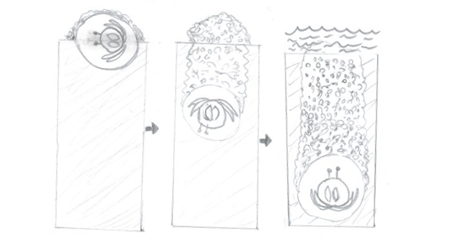Burrowing
Similar to other Decapods such as Dotilla mictyroides, the Light-blue Solider Crab burrows in a corkscrew
like fashion. This corkscrew motion mixes the sediment and distribution of
organic matter in the sediment in a fashion that creates a circular-like
chamber informally described as an igloo. This process increases the amount of
oxygen available in deeper sediment, allowing the crab to breath easy. Due to
this process the Light-blue solider crab has been known to burrow as deep as 30cm(Cameron,
1966).
Light-blue Solider crabs will burrow when feeling threatened
by other organisms, including humans, and also incorporate burrowing into one of
their modes of feeding. The main purpose for burrowing is to avoid contact with
the water column. Before high tide hits,
the solider crab will burrow to a depth to avoid the encroaching water and will
stay buried until the beginning of low tide. Is it believed part of reason as
to why M. longicarpus elicits this
behaviour is to avoid predators (Cameron, 1966).

Drawing adapted from Maitland & Maitland (1992). Shows the process with which M. longicarpus builds avoids the incoming water column at high tide whilst still breathing air by forming an air chamber called an igloo. Drawing by Kate Buchanan, 2014.
Original video captured by Kate Buchanan of M. longicarpus' burrowing technique. |